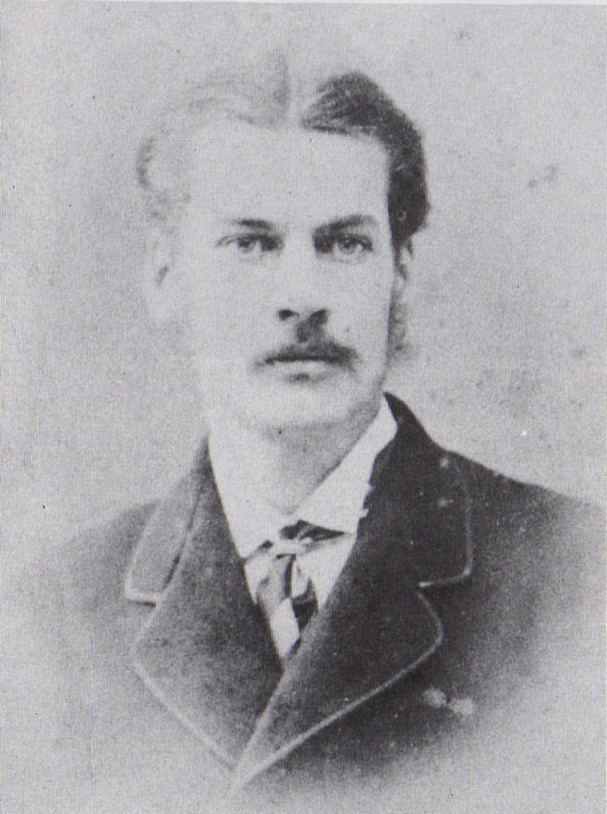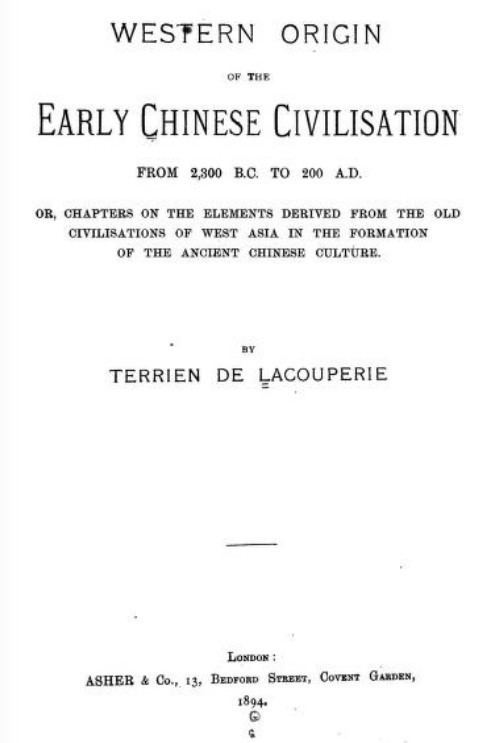Name Albert Jean | ||
 | ||
Died 11 October 1894Fulham, London, England Fields Oriental studies, specialising in philology | ||
Albert Étienne Jean Baptiste Terrien de Lacouperie (23 November 1844 in Ingouville, Le Havre – 11 October 1894 in London) was a French orientalist, specialising in comparative philology. He published a number of books on early Asian and Middle-Eastern languages, initially in French and then in English.
Contents

Terrien died in London at his residence, 136 Bishop's Road, Fulham, leaving a widow.

Early life and education

Biographical detail on Terrien is scant, some notices drawing on Royal Asiatic Society records and prefaces. He is sometimes noted as born in 1845, although his date of death is firmly established.

He was born in Normandy, a descendant of the Cornish family of Terrien, which emigrated to France in the 17th century during the civil war, and acquired the property of La Couperie in Normandy. Some bibliographies append "Baron" to his name. His father was a merchant, and he received a business education.
Career
In early life he settled at Hong Kong, where he soon turned his attention from commerce to the study of oriental languages, and he acquired an especially intimate knowledge of the Chinese language. In 1867, he published a philological work, Du Langage, Essai sur la Nature et l'Étude des Mots et des Langues (Paris, 8 volumes), which attracted considerable attention. Soon after, his attention was attracted by the progress made in deciphering Babylonian inscriptions, and by the resemblance between the Chinese characters and the early Akkadian hieroglyphics.
The comparative philology of the two languages occupied most of his later life, and he was able to show an early affinity between them. In 1879, he went to London, was elected a fellow of the Royal Asiatic Society, and began to write works in English. In 1884, he became professor of comparative philology, as applied to the languages of South-Eastern Asia, at University College, London.
In the 1880s, he was also employed on several short-term contracts to work on the East-Asian coin collection at the British Museum. In 1892, he published his Catalogue of Chinese Coins from the VIIth Century BC to AS 621 including the Series in the British Museum, for which the Académie des Inscriptions, France, awarded him the Stanislas Julien Prize, worth 1,500 French francs, "for the best work relating to China".
His last years were largely occupied by a study of the I Ching, or Book of Changes. Its meaning had long proved a puzzle both to native and to foreign scholars. Terrien demonstrated that the basis of the work consisted of fragmentary notes, chiefly lexical in character, and noticed that they bore a close resemblance to the syllabaries of Chaldaea. In 1892, he published the first part of an explanatory treatise The Oldest Book of the Chinese (London, 8 volumes), in which he stated his theory of the nature of the I Ching, and gave translations of passages from it. The treatise, however, was not completed before his death.
In recognition of his services to oriental study he received a Doctor of Letters degree from the University of Leuven. He also enjoyed for a time a small pension from the French government, and after that had been withdrawn an unsuccessful attempt was made by his friends to obtain him an equivalent from the English ministry. He was twice awarded the prix Stanislas Julien by the Académie des Inscriptions et Belles-Lettres for his services to oriental philology.
Evaluations of Terrien's theories
Terrien's translations and theories that the origins of Chinese civilisation lay in Mesopotamia impressed the public but were criticised or dismissed by sinologists then and in following years. James Legge, whose translations of the Chinese Classics appeared at the same time as Terrien's and are still considered standard, questioned Terrien's sinological competence. Legge's review of Terrien's translation of the I Ching charged that only "hasty ignorance" could have led to the mistakes, which included failing to consult the basic reference, the Kangxi Dictionary. Another reviewer at the time labelled Terrien a "specious wonder-monger." But the final decline of Terrien's comparativist theories of the origins of Chinese civilisation was marked by the attacks of University of Leiden sinologist, Gustav Schlegel. Schlegel and following Orientalists insisted on the independent origin and growth of Chinese civilisation. In particular, these scholars pointed out that monosyllabic Chinese characters could not be equated to polysyllabic Chaldean words; that in any case, Assyriological knowledge was "dangerously uncertain" and too unreliable to make such claims; and that it had not even been established that Babylonian civilization was earlier than Chinese.
Terrien's theory on the Babylonion origins of the sixty year ganzhi cyclical calendar system has fared little better, as the two systems differed both in concept and function: the Babylonion decimal system was used to count up to 60, where the cycle started again, while the Chinese system combined a cycle of twelve and a cycle of ten.
Lacouperie's ideas received attention from some Chinese intellectuals and nationalists, in support of anti-Manchu racist theories (founded on those of Herbert Spencer and the Yellow Book) that were current at the beginning of the 20th century. His theory of a Western origin of Chinese civilisation had reached Japan around the same time, the academic refutation did not stop it becoming a prevalent and populist notion. The idea for a mythical script, native to Formosa, was founded on a formulation of the author, though he also noted the paucity in quality of information from that region.
A more durable contribution to scholarship was Lacouperie's identification of the ancient names of the Indian Brahmi and Kharosthi scripts from research in Chinese sources.
Works
Besides the works mentioned, Terrien was the author of:
Many of these treatises were reprinted from the Journal of the Royal Asiatic Society and other publications. He also edited the Babylonian and Oriental Record from 1886.
